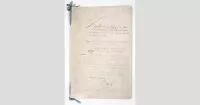Asturias is an autonomous community, officially the Principality of Asturias, located in northwest Spain. It is known for its rugged coastline, mountainous interior (part of the Picos de Europa National Park), and green landscapes. Oviedo is the capital city. The region has a rich cultural heritage, including pre-Romanesque architecture and distinctive cuisine, like fabada asturiana (bean stew) and cider. Its history includes being a refuge for Christians during the Moorish invasion, eventually forming the Kingdom of Asturias.
1/1984: Ley 1/1984
In January 1984, Ley 1/1984 was formalized which adopted "Asturias, patria querida" as the region's anthem.
1/1998: Law 1/1998
In January 1998, Law 1/1998, was enacted to protect and promote the Asturian language (Bable).
October 1934: Asturian miners' armed uprising
In October 1934, Asturian miners and workers initiated an armed uprising, known as the Revolution of Asturias, to oppose the right-wing CEDA party's rise to power. A Popular Front Committee controlled southern Asturias for a month, while workers committees emerged elsewhere. Anarcho-syndicalists took control in Oviedo. Troops led by Francisco Franco suppressed the revolt with tactics typically used in overseas colonies, resulting in harsh oppression during October 1934.
1939: Asturias known as the Province of Oviedo
In 1939, after Franco gained control of Spain, Asturias, historically linked to the Spanish Crown, was renamed and known as the "Province of Oviedo".
1975: Franco's Death
Franco's death occurred in 1975.
1977: Restoration of province name
In 1977, after the return of democracy to Spain, the province's original name, Asturias, was restored.
1978: Rafael Luis Fernández Álvarez, President of the Regional Council
In 1978, Rafael Luis Fernández Álvarez served as the President of the Regional Council.
December 1981: Asturias becomes an autonomous community
In December 1981, Asturias became an autonomous community within Spain, established by the 1978 Constitution.
January 1982: Statute of Autonomy in force
On January 30, 1982, the Statute of Autonomy of the Principality of Asturias came into force, defining the region's organization and political structure.
1985: UNESCO World Heritage declaration
In 1985, UNESCO declared the pre-Romanesque monuments and the Cathedral of Oviedo as World Heritage Sites.
1986: Rise in "disability-free" life expectancy
According to a 2010 report, the numbers for disability-free life expectancy has risen significantly both for males and females in the area since 1986.
1986: EU Investment
Since 1986, Asturias benefited extensively from European Union investment in roads and other essential infrastructure.
1999: Santiago Calatrava awarded
In 1999, the architect of the Palace of Congresses of Oviedo, Santiago Calatrava, was awarded the Prince of Asturias Award for the Arts.
2007: Male life expectancy reading
In 2007, male life expectancy in Asturias was measured at 76.7 years according to a Spanish government study.
2010: Gijón-Nantes ferry connection
Between 2010 and September 2014, the city of Gijón was connected by ferry with the French city of Nantes.
2010: Life expectancy study
In 2010, a Spanish government study ranked Asturias lowest (tied with Andalucia) for male life expectancy at 76.7 years from 2007 readings.
September 2014: Ferry route cancellation
In September 2014, the ferry route connecting Gijón with Nantes was cancelled.
2015: Gijón area pollution hotspot
In 2015, a report by the International Institute for Applied Science Systems identified the Gijón area as a pollution hotspot in Western Europe.
2017: Immigration Census
According to the 2017 census, immigrants represent only 3.65% of the population.
2017: Unemployment rate in Asturias
In 2017, the unemployment rate in Asturias stood at 13.7%, below the Spanish average.
2018: GDP of Asturias
In 2018, the Gross Domestic Product (GDP) of Asturias was 23.3 billion euros, accounting for 1.9% of Spanish economic output.
2019: Adrián Barbón elected president
In 2019, Adrián Barbón (PSOE) was elected as the current president of Asturias.
2019: Sociological study on religion
In 2019, a study by the Centre for Sociological Research showed the population of Asturias was 65.2% Catholic, 13.5% agnostic, and 12.8% atheist.
2020: Population Census
According to the 2020 census, the region had a population of 1,018,784.
November 2023: Pajares Base Tunnel opening
The Pajares Base Tunnel opened for commercial services at the end of November 2023, introducing AVE high-speed trains to Asturias.
2030: Pollution predictions for Gijón
A 2015 report from the International Institute for Applied Science Systems included predictions for 2030 conditions that indicated Gijón would continue to be a pollution hotspot.
Mentioned in this timeline
Spain officially the Kingdom of Spain is located in Southern...

A constitution serves as the foundational legal document for any...
UNESCO is a specialized agency of the United Nations UN...

September is the ninth month of the year in the...
A prince is a male ruler or a male member...

A community is a social unit defined by shared characteristics...
Trending

7 months ago Jenny McCarthy Reveals Beauty Secrets at 52 and Discusses Couples Therapy

19 days ago Megan Thee Stallion Rejects 'Call of Duty' Role Due to Trauma.

7 months ago Donte DiVincenzo's impactful performance and confidence boost Timberwolves in Western Conference Finals Game 1.
Christopher Rafael Morel is a Dominican professional baseball player who currently plays third base for the Tampa Bay Rays His...
Marcus Spears nicknamed Swagu is a former NFL defensive end who played nine seasons mainly for the Dallas Cowboys He...

7 months ago George Wendt, 'Cheers' Star, Remembered Fondly After Death; Sudeikis Shares Memory
Popular

Candace Owens is an American conservative political commentator and author...

Ilhan Omar is an American politician currently serving as the...

XXXTentacion born Jahseh Dwayne Ricardo Onfroy was a controversial yet...
Matt and Ross Duffer known as the Duffer Brothers are...

Tom Cotton is an American politician and Army veteran currently...
The Kennedy Center Honors are annual awards recognizing individuals and...